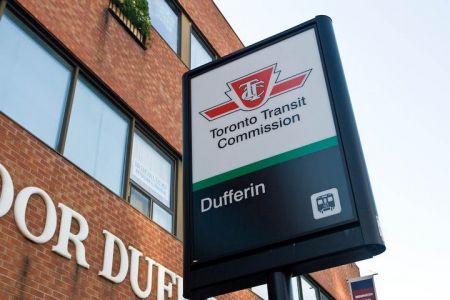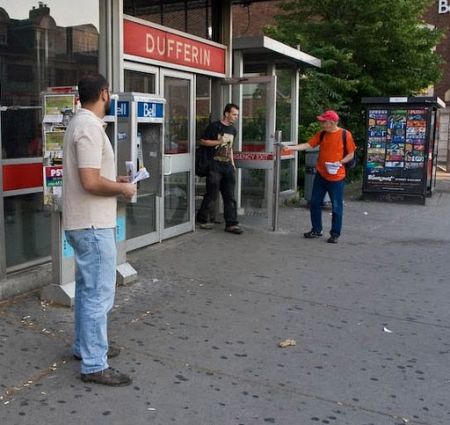Their movement may still be in its initial stages, but organizers of the Free and Accessible Transit campaign were not short of ideas at their latest meeting.
Last Thursday, nine representatives from the Greater Toronto Workers’ Assembly (GTWA) congregated in a College Street boardroom to discuss the progress of their free transit campaign, known by the slogan “No Fare is Fair!” Prominent among the topics of debate were the campaign’s outreach efforts to potential allies and the state of the group’s promotional material.
A body dedicated to bringing together activists from the broader working class movement, promoting anti-capitalist ideas and developing concrete strategies to move the struggle forward, the GTWA held its first formal meeting in October 2009. By the following April the group had decided on a free transit campaign as its first major operation.
“We went through a whole process of trying to figure out campaigns,” said Herman Rosenfeld, a retired member of the Canadian Auto Workers who taught Labour Studies at McMaster University before joining the GTWA. “We had a whole series of choices, we had debates about it, we had small group discussions about the strengths and weaknesses of the different campaigns, and we ended up adopting this as one of them.”
Much of the original rationale for the free transit campaign was that it was an issue calculated to unite disparate advocacy groups within the city. In a recent article for the Socialist Project’s Bulletin, Rebecca Schein, an assistant professor of human rights at Carleton University and GTWA supporter, wrote that “the free transit campaign is already pushing us to elaborate [...] links between commodification, environmental justice, the limits and capacities of public sector unions, and the interlocking forms of exclusion faced by people marginalized by poverty, racism, immigration status, or disability...Free transit could represent a site of convergence between many distinct activist circles in the city and foster greater integration and collaboration between environmental advocacy, anti-poverty work, and diverse human rights organizations.”
At Thursday’s meeting, group members discussed interactions with Live Green Toronto, a local environmental group that encourages the growth of community gardens in Scarborough; Not Far from the Tree, whose volunteers pick fruit from trees upon request for wider distribution; People and Organizations in North Toronto (POINT), a United Way member agency; and Scarborough Left Behind, a Tamil-oriented group, among others. Proponents of free transit were also actively pursuing young NDP types swept up in the furor over Transit City.
Conversation turned towards promotional materials. Members had set up two websites on Blogger and Tumblr in order to generate feedback and it was decided on Thursday that the Blogger account would become the official website. The campaign has a Twitter account (nofareisfair) and is in the process of setting up a Facebook page in addition to its existing group, The Free and Accessible Transit Campaign of the GTWA.
Herman Rosenfeld created a draft pamphlet for the meeting and a prototype leaflet was also distributed. Representatives at the meeting declared the need for a fact sheet they could hand out.
Perhaps the most significant question members felt the need to address was how free mass transit would be paid for. Rosenfeld’s pamphlet offered a plethora of solutions, including replacing fares with government subsidies which would be paid for through a progressive tax system. Providing better jobs for working people – ideally achieved through the public ownership of manufacturing and democratic community planning – would also create a larger tax base from which to draw funds.
Other ideas ranged from tolls on 400 series highways to “congestion fees” that would apply a surcharge to automobile users during periods of peak demand. The pamphlet noted that there are already 28 zero-fare transit cities in North America and Europe.
The key priority for the organizers was getting through to ordinary Torontonians in addition to the usual cadre of activists. The challenge of appealing to the broad masses garnered proposals ranging from petitions to impromptu demonstrations to embracing the environmental movement, whose near-universal value has significant overlap with the campaign’s own goals.
In the end, there is no substitute for traditional street-level organizing and the meeting concluded with recognition that much hard work would be required before the campaign could begin to consider itself a true mass movement.

